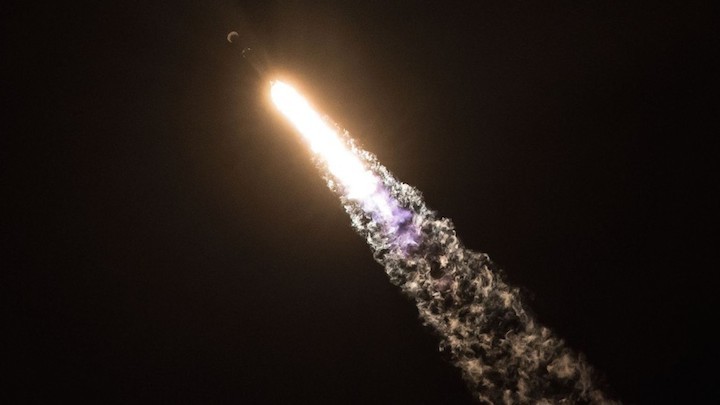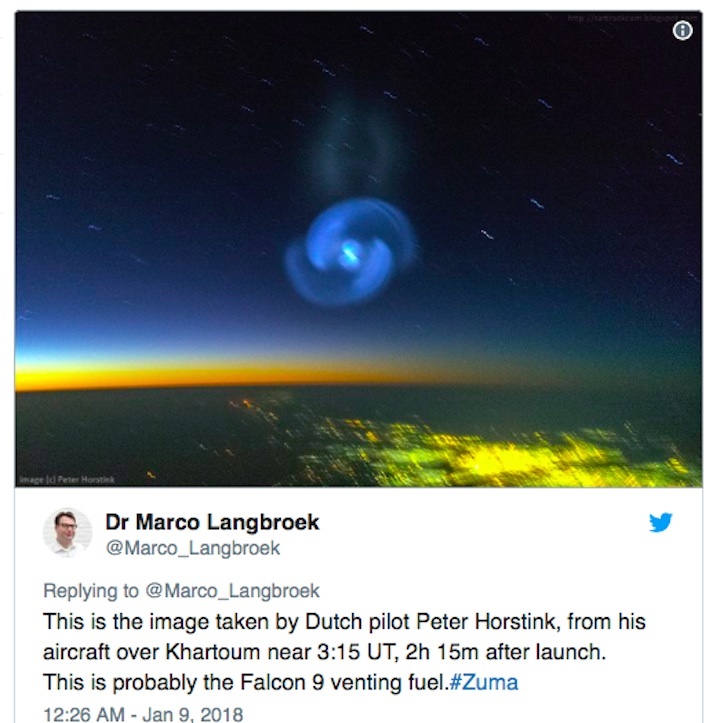Classified Zuma spacecraft may have failed after SpaceX launch

A classified government mission launched to space atop a SpaceX Falcon 9 rocket may or may not be functioning in orbit after its Sunday night launch from Florida; but aside from some rumors and anonymous quotes, we really don't know what's going on with the U.S.'s secret satellite.
According to anonymous sources quoted in stories published in the Wall Street Journal and Bloomberg, the mission — codenamed Zuma — appears to have failed to separate from the rocket as expected after launch.
Zuma is "presumed to be a total loss," according to the Wall Street Journal.
For its part, SpaceX is taking none of the blame for the possible failure, with company president Gwynne Shotwell releasing a statement saying that "after review of all data to date, Falcon 9 did everything correctly on Sunday night."
Shotwell added: "If we or others find otherwise based on further review, we will report it immediately. Information published that is contrary to this statement is categorically false. Due to the classified nature of the payload, no further comment is possible."
Northrop Grumman, the company that purchased the SpaceX launch for the Zuma payload on the government's behalf, was also unable to comment on the state of the satellite due to the fact that it's classified.
Space Track — which tracks and catalogues objects in orbit — did create an entry for Zuma, implying that the spacecraft completed at least one orbit, according to astrophysicist Jonathan McDowell, but it's still possible that Zuma failed afterwards.
McDowell also added that Space Track made a mistake in its addition of Zuma to the catalog.
Ultimately, the truth of the government's secret satellite remains a mystery and it's probably going to stay that way.
The government agency responsible for launching the spacecraft hasn't claimed it, which is somewhat odd. Even the National Reconnaissance Office, responsible for U.S. spy satellites, usually claims its secret launches.
Unclaimed launches aren't unprecedented, however.
In 2009 and 2014, two missions, called PAN and CLIO were unclaimed when launched. Eventually, it was revealed that PAN was actually intercepting communications above the Middle East for the National Security Agency.
Zuma's launch was aired live via webcast by SpaceX, though the company cut away after the first stage of the Falcon 9 rocket came back in for a landing.
At that time, the company reported that everything had gone well with the rocket.
Hopefully, for SpaceX's sake, that's true. The company has a busy year ahead of it, with dozens of launches on the books and its upcoming maiden flight of the Falcon Heavy rocket, designed to being large payloads to orbit and beyond.

The first stage of the Falcon 9 back for a landing after Zuma launch.
IMAGE: SPACEX
If there were a problem with the Falcon 9 during this launch, it's likely that SpaceX would stand down its launch schedule and wait for a thorough review, but because they've found no problems to date, the company is claiming that it's pressing ahead.
"Since the data reviewed so far indicates that no design, operational or other changes are needed, we do not anticipate any impact on the upcoming launch schedule," Shotwell said.
"Falcon Heavy has been rolled out to launchpad LC-39A for a static fire later this week, to be followed shortly thereafter by its maiden flight. We are also preparing for an F9 launch for SES and the Luxembourg Government from SLC-40 in three weeks."
Quelle: Mashable


